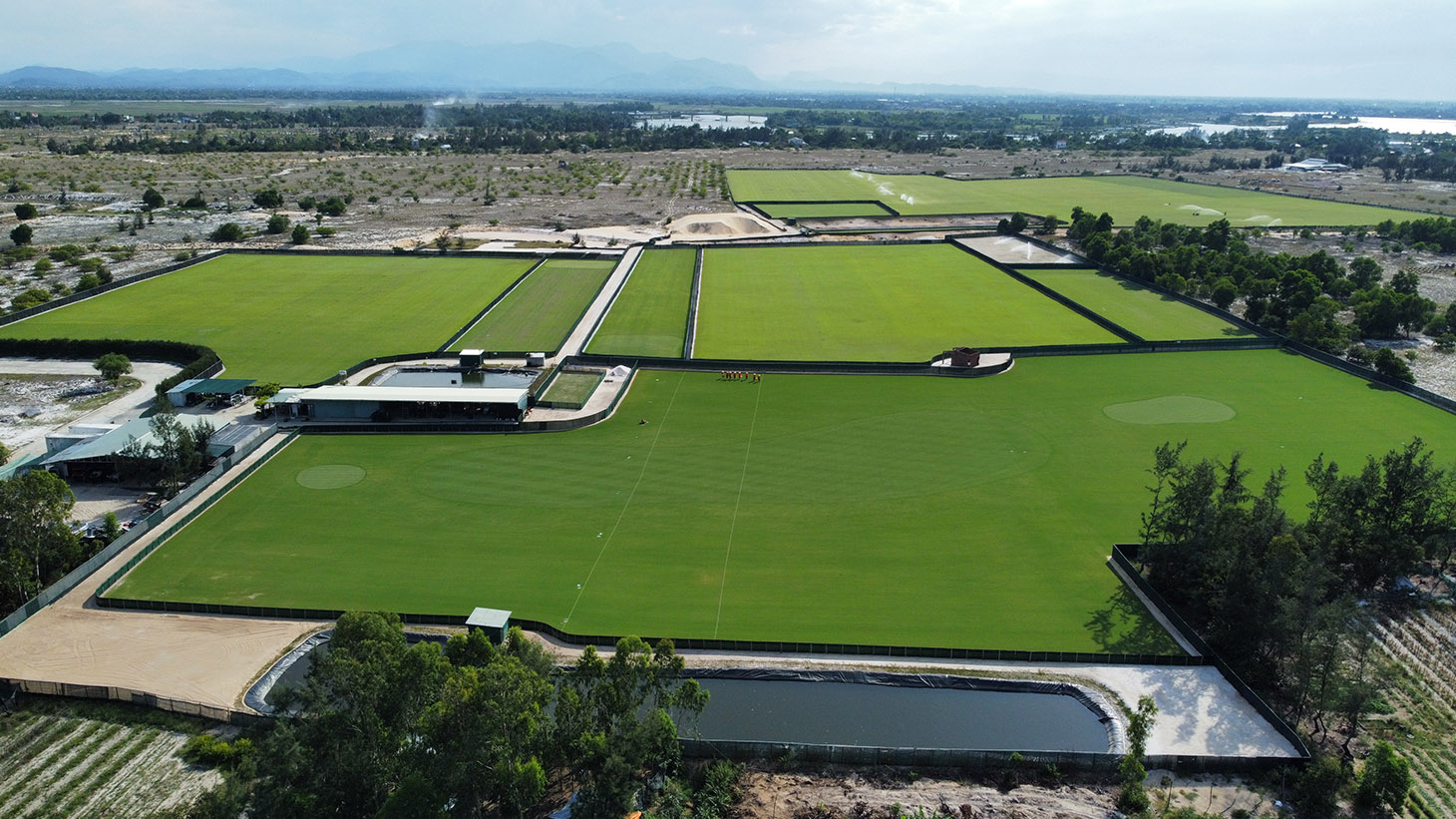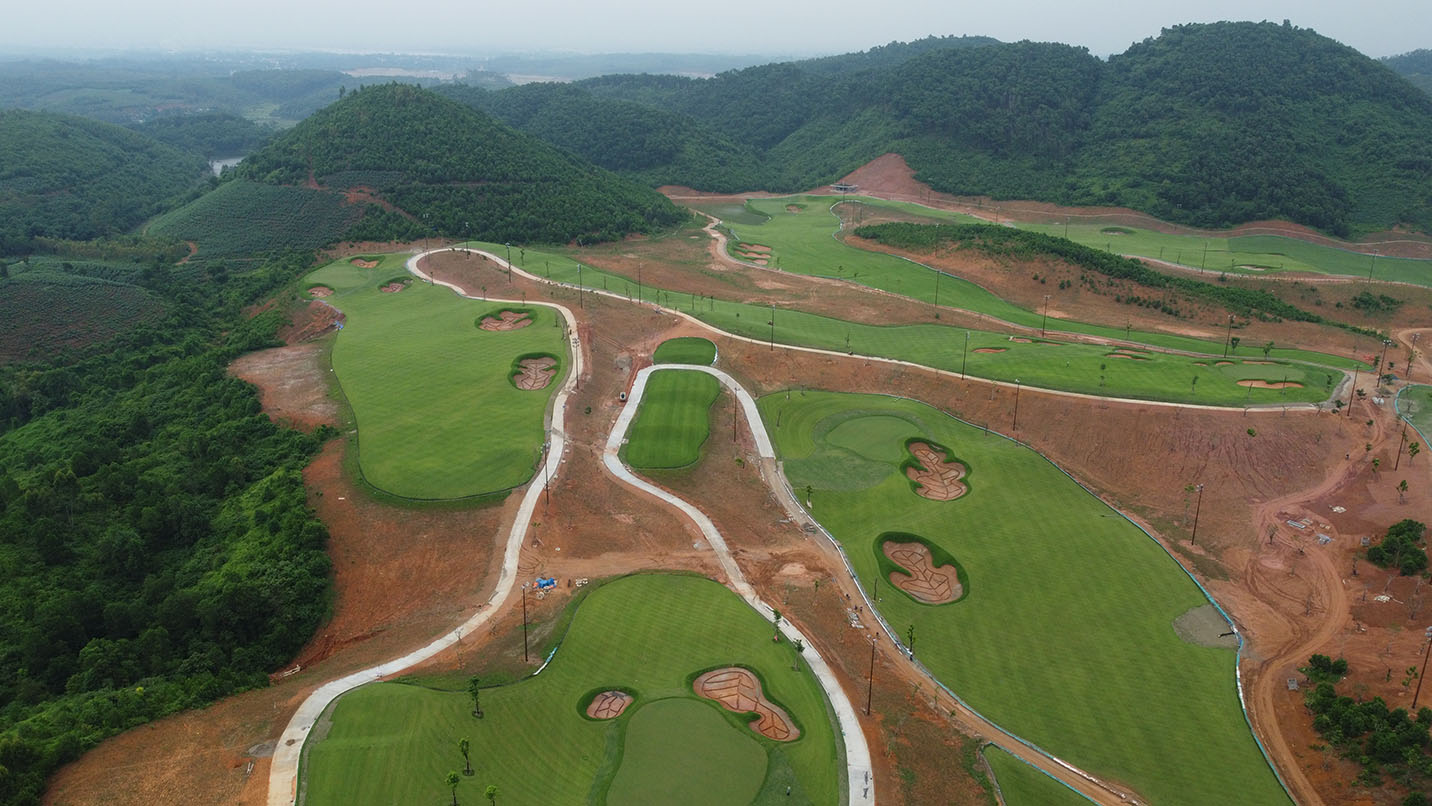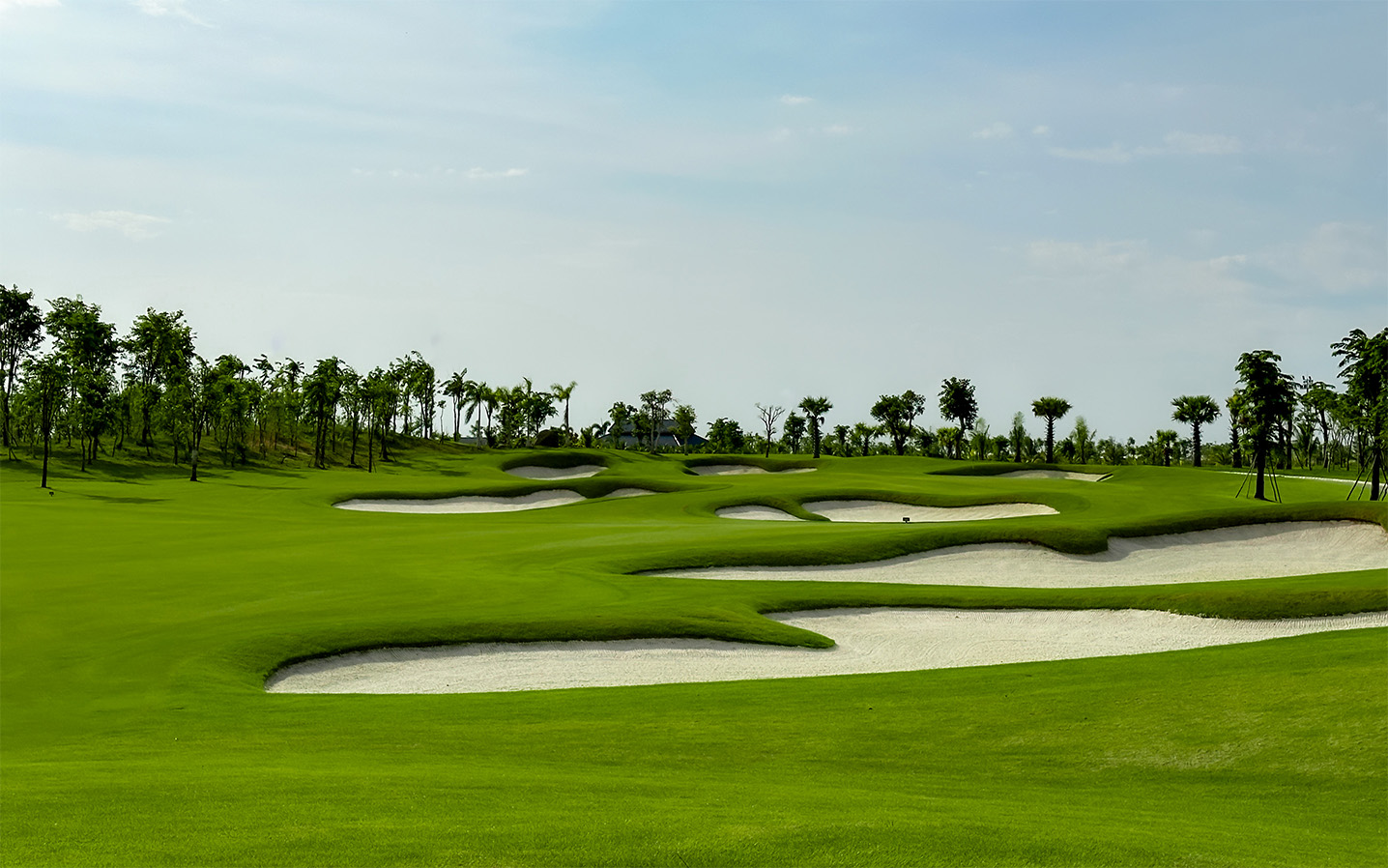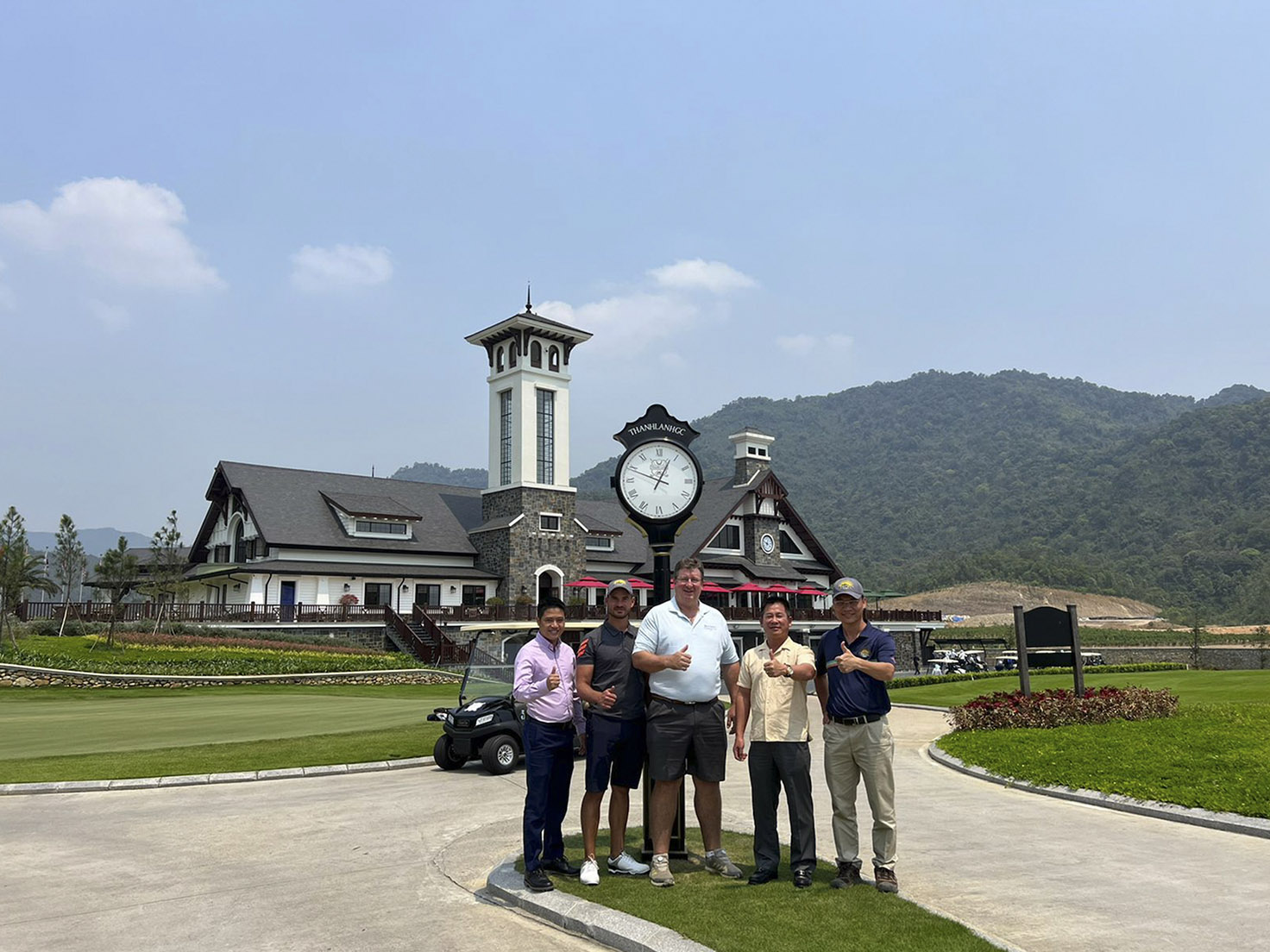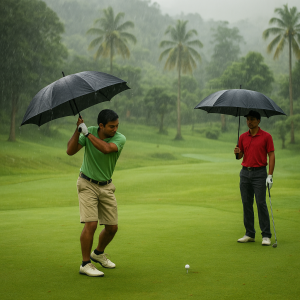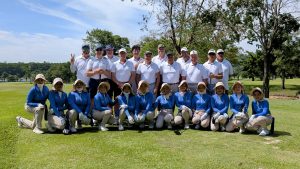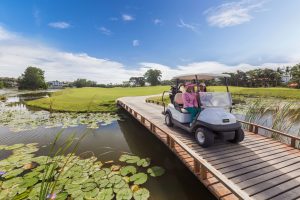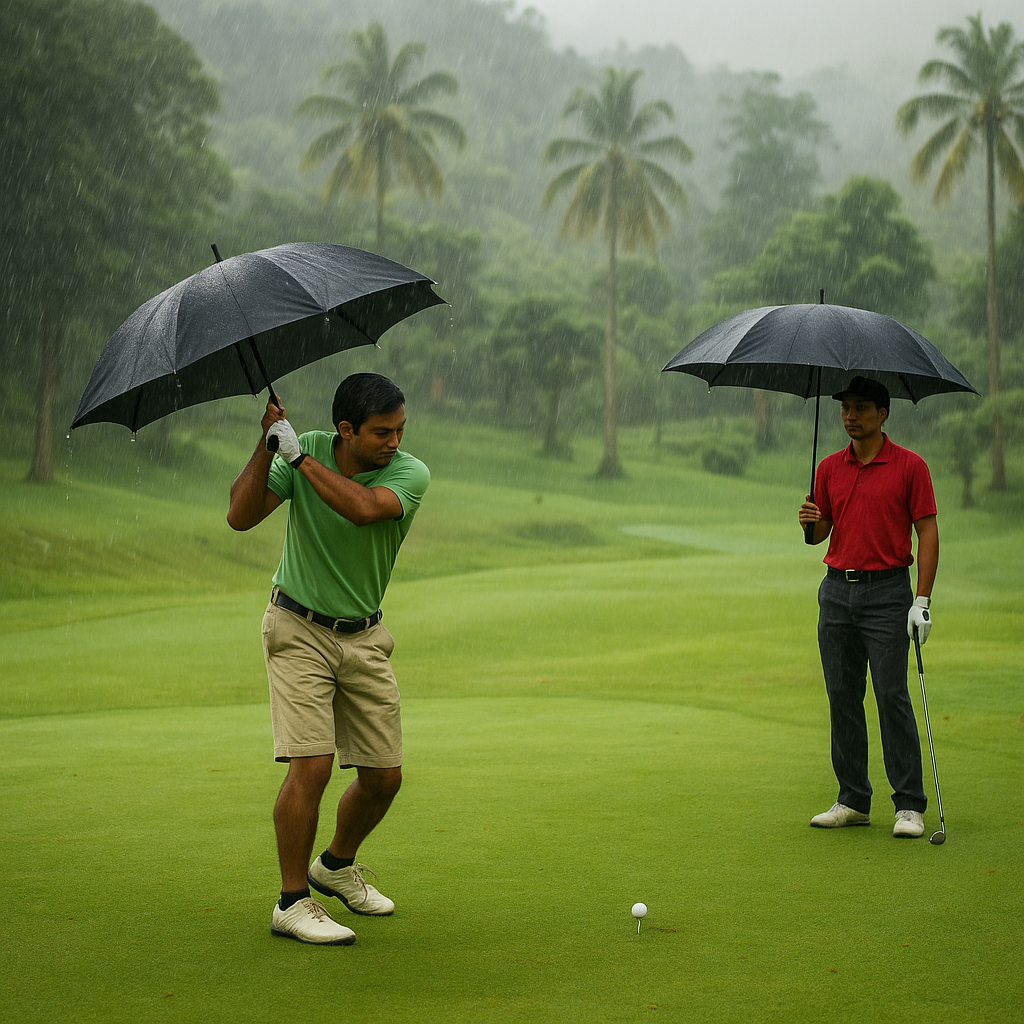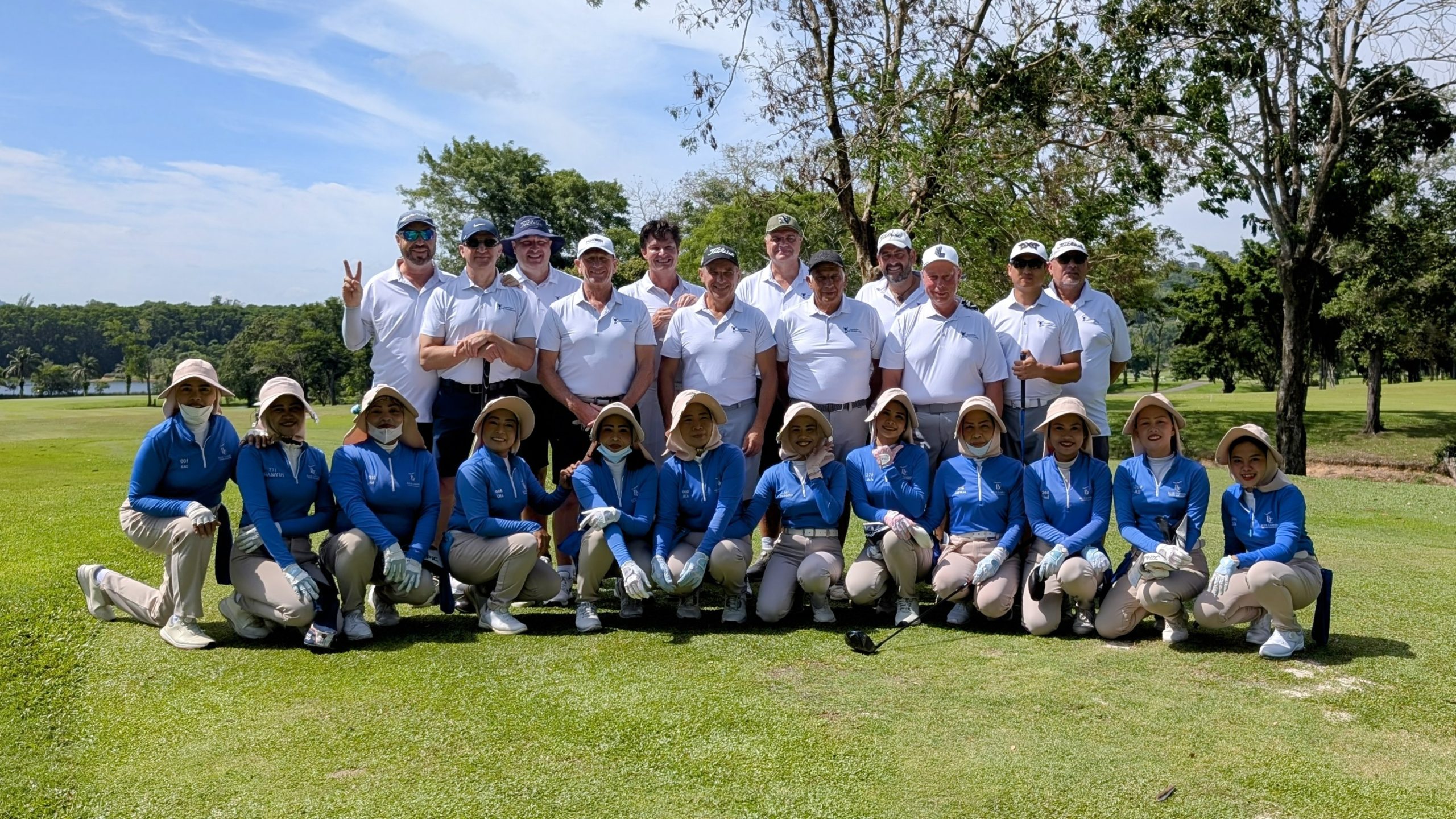It is a testament to the skills of the S.E. Asia’s sports turf industry that we almost take for granted that the courses will be in top condition when we tee off.
Brad Burgess, known in the trade as one of the leading experts in the sports turf industry, brings a wealth of experience to the table. As a former Golf Course Construction and Maintenance Superintendent, he has worked with many of the top golf course Architects in extremely diverse situations. Now, as the head of Sports Turf Solutions (STS) with operations in several countries, his expertise is unparalleled. This month, he was in Japan, Australia, and the USA, so we managed to catch him while he jetted around the world.
How did you first get into this specialized industry? I was extremely fortunate to have the opportunity to relocate to Indonesia in 1995 and work on a Coore & Crenshaw golf course in the virgin rainforests of West Papua. Here they provided some of the world’s best Agronomy Consultants to train me.
Although you now own a company that works worldwide, please explain why Thailand is your HQ. Thailand is my home, it’s a wonderful place to live and work, plus it’s a base for my wife and our four children. Singapore is the company headquarters for various reasons, lower taxes, and it’s a central hub to all our offices in Malaysia, Vietnam, Myanmar, and Thailand.
Maintaining a golf course can be an expensive business, so has modern technology helped groundkeepers keep their 18 holes in greater condition? Good question. I just conducted a seminar for the Asian Tour Referees last month and one topic was the rising cost of maintenance machinery. While the technology is better, although, at times too advanced for the local Equipment Managers, the costs of these machines are too expensive now for most golf courses to purchase. Golf Courses in general can’t afford to replace their machinery as often as they need to.
With global warming posing challenges to the seasons, have you managed to stay ahead of these challenges? The introduction of new varieties of Zoysia grasses to Asia almost 10 years ago has been a game-changer. These grasses, cross-bred into more durable varieties, can withstand extensive heat and dry periods, are 90% more pest and disease-resistant, and require far less nutrient and water inputs. Their playability is a cut above anything else introduced to Asia in the past 30 years, offering a promising future for the sports turf industry.
Is it possible to reduce the costs of your clients’ courses? By improving the quality and playability of clients’ courses while reducing costs and promoting environmental sustainability, we are reshaping the sports turf industry. The older turf varieties introduced to Asia since the construction booms of the 90’s haven’t adapted to the harsh growing environments, requiring vast amounts of nutrients and additional maintenance. In contrast, the improved Zoysia turf varieties native to the region are far more cost-effective and sustainable, ensuring a brighter future for the industry.
Please explain how you experiment with new types of turf and is there one particular variety that your company has developed to cope with this region’s climate in particular? There are no breeding facilities in Asia that are producing new varieties, so we get our grasses from Texas and Georgia in the USA. The varieties that survive a stringent testing process in the USA are then taken by us and we conduct our own trials over several years to ensure they are adaptable to the Asian climates. We have a number of Zoysia varieties that have been successful for us, Zeon Zoysia is the most proven Zoysia variety around the world for Tees, Fairways and Roughs but is now being superseded by Stadium Zoysia which Architects and Developers love the darker natural green colour.
Many of Thailand’s courses opened in the late 90’s and now need a bit of tender loving care. Back then, most of the courses were built with imported 419 Bermuda grass from the USA. It’s a nice fast-growing grass but requires more nutrients and chemicals for it to out compete weeds and recover from high traffic. Paspalum was introduced in the 2000’s as a beautiful green lush turf with a wow factor, but again, requires a lot of maintenance. These challenges have led to the need for new, more sustainable turf varieties.
Since our introduction of the various Zoysia Grasses, we’ve renovated several courses, with the Canyon Course at Blue Canyon Country Club being one of our highlights. This renovation involved replacing the existing turf with our Zoysia grasses, significantly improving the course’s playability, and reducing maintenance costs. Other courses that have converted to our Zoysia grasses include Singapore Island Country Club, Seletar Country Club, Vietnam Golf & Country Club, and Laem Chabang International, to name a few. We have also grassed more than 30 other new golf courses throughout Asia, and we have some exciting new projects under construction at the moment.
Finally, do you still get a chance to relax and play a few rounds of golf yourself? If so, what are your favorite courses? My most enjoyable course to play in Thailand is Chee Chan Golf Club. It’s designed by a good friend of mine, David Dale. I’m also a member of the Old Course, Siam Country Club and enjoy all those courses. The Lakes Course at Blue Canyon Country Club is probably the most underrated course in Asia. It needs a few adjustments to some of the greens, but that’s a course I would love to restore the greens, Fairways and Bunkers on at some stage.
We’ve collaborated with some amazing architects in Vietnam, Cambodia, Indonesia, and Thailand. Stonehill Golf Club that hosted the LIV Golf event in 2022 is an amazing property, so too are Hoiana Shores, KN Links and Royal Golf Club in Vietnam. One of our initial projects was Myotha Mandalay Golf Club in Mandalay, Myanmar. It’s a must for any golf enthusiast who wants a unique cultural experience.


